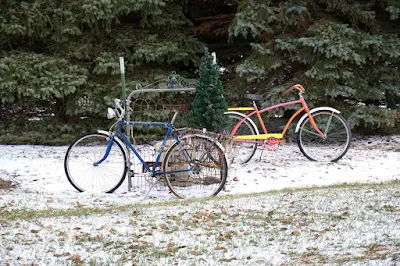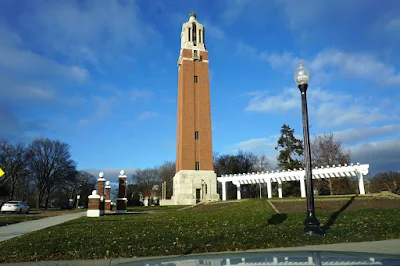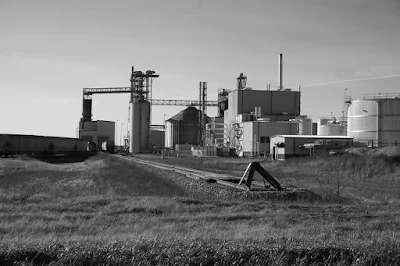Monday, December 31, 2018
Sunday, December 30, 2018
Saturday, December 29, 2018
Friday, December 28, 2018
Thursday, December 27, 2018
Wednesday, December 26, 2018
Tuesday, December 25, 2018
Monday, December 24, 2018
Sunday, December 23, 2018
Saturday, December 22, 2018
Friday, December 21, 2018
Thursday, December 20, 2018
Wednesday, December 19, 2018
Tuesday, December 18, 2018
Monday, December 17, 2018
Sunday, December 16, 2018
Saturday, December 15, 2018
Friday, December 14, 2018
Thursday, December 13, 2018
Wednesday, December 12, 2018
Tuesday, December 11, 2018
Monday, December 10, 2018
Sunday, December 9, 2018
Saturday, December 8, 2018
Friday, December 7, 2018
Thursday, December 6, 2018
Wednesday, December 5, 2018
Tuesday, December 4, 2018
Claim Cabin
This is an original claim shanty from the 19th Century in South Dakota. Abraham Lincoln signed the Homestead Act in 1860 allowing Americans to settle on 270 million acres of land. In South Dakota 97,197 Homesteads covered 15,660,000 acres, or 32 percent of the state's land. One of the requirements of the Act was to live on the claim for five years before it could be "proved up", that is given final ownership of the land. This required a home measuring 12x14, which is the dimensions of this shanty. This particular claim shanty was shared by two families and was placed on the property line between two claims. The Act required families to live on the land at least six months a year, so few families spent winters living in these cabins. To homestead a family had to find 160 acres of unclaimed land, file a $10 filing fee at the county land office, move to the claim, and make improvements to the land. The Homestead Act did not officially end until 1975 in the lower 48 states, and 1985 in Alaska, but most unclaimed land was long gone by 1920. In South Dakota only 40 percent of claims proved up. The other 60 percent could be sold to a new homesteader after a minimum six months of residency, so many homesteaders used land sales to finance other activities.
White settlers, a large percentage immigrants from Europe, were the most common homesteaders who benefited by acquiring ownership of land through hard work. The nation benefited by having vast areas settled, agricultural products added to the economy, towns established, and roads constructed. In South Dakota the railroads were important to the settlement of the state. Homesteaders usually arrived by train, ordered goods delivered by train, and sold their products to markets shipped by rail.
The losers from the Homestead Act were Native Americans, especially the Sioux Nation in South Dakota. The Great Sioux Nation was granted 22 million acres by the Laramie Treaty of 1868. By 1889 this was reduced to five much smaller reservations in S.D. The Dawes Act of 1887 granted each Indian family 160 acres, but these land grants were either sold or leased for very little money to white farmers. In 1908 a land lottery divided the Rosebud Reservation into 160 acre parcels which went mostly to whites. Over 100,000 people signed up for this lottery.
Monday, December 3, 2018
Sunday, December 2, 2018
Saturday, December 1, 2018
Friday, November 30, 2018
Thursday, November 29, 2018
Wednesday, November 28, 2018
Tuesday, November 27, 2018
Monday, November 26, 2018
Sunday, November 25, 2018
Saturday, November 24, 2018
Friday, November 23, 2018
Thursday, November 22, 2018
Wednesday, November 21, 2018
Tuesday, November 20, 2018
Monday, November 19, 2018
New House
This house was built by South Dakota State University's Architecture Department to feature their innovative ideas and energy efficiency. Personally I do not like it for a number of reasons. The exterior is an eye sore. It looks like it was designed by a first grader drawing a house with a ruler. It is built on a lot next to the Brookings Area Habitat For Humanity office, and Habitat was competing to buy this lot to build an affordable house. Habitat lost out to the University with its much deeper pockets. After construction was completed the house is now offered for sale to the public at just under $400,000. The location is in a neighborhood of older, small houses averaging about $150,000 in value. There are no buyers on the horizon after being on the market for four months. Who would want to spend that kind of money to live in an older neighborhood in an ugly house even if it was energy efficient?
Sunday, November 18, 2018
Saturday, November 17, 2018
Friday, November 16, 2018
Thursday, November 15, 2018
Wednesday, November 14, 2018
Tuesday, November 13, 2018
Subscribe to:
Posts (Atom)


















































